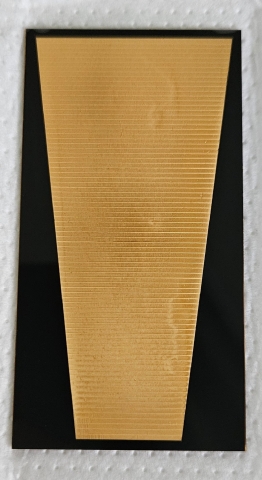Unique trapezoidal grating for multi-resolution edge illumination

Edge illumination is an established X-ray phase contrast method using gratings. However, conventional gratings pose a major limitation on geometric flexibility of lab systems. The gratings are custom made for a specific imaging geometry and perfectly positioned to align the two gratings with the detector pixels columns. The resolution for a setup is fixed and determined by the period of the sample grating (without dithering) or the aperture size of the sample grating (with dithering). To adjust the spatial resolution in conventional cone-beam X-ray imaging, the object is usually positioned closer to or further away from the source, projecting the phantom onto a larger or smaller detector area. Unfortunately, this is not possible with conventional EI gratings. To achieve optimal refraction and dark field sensitivity, the sample must be positioned as close as possible to the sample grating. Changing the image resolution requires that the sample grating moves along the optical axis with the sample, but even a small change in magnification causes a mismatch between beamlets and pixels. While gratings divided into sections with different periods or apertures exist, the resolution can only be modified to discrete steps and increasing the number of resolution steps comes at the expense of the field of view (FOV) or the grating size. To adjust the sample grating magnification continuously while preserving the projected beamlet positions, a sample grating which retains the projected aperture period is required, which was recently non-existing. Following the phase-contrast research at imec Vision-Lab, a trapezoidal grating design was suggested, overcoming the rigidity of EI. This design was simulated, patented, and finally manufactured in collaboration with Creatv BIO. Since this week, the trapezoidal grating is accesible for our research group, which can expand our current X-ray setup to a multi-resolution edge illumination setup, allowing new opportunities for experiments and groundbreaking research.

